How the coronavirus was covered-up by China in Wuhan
This is how China strategically covered-up the coronavirus outbreak, as officials “actively suppressed information about the virus and downplayed its highly-contagious nature.’’
Coronavirus
Don't miss out on the headlines from Coronavirus. Followed categories will be added to My News.
Special Investigation: Chinese officials covered-up the coronavirus outbreak for more than a month, destroying any hope the deadly virus could be contained within the city of Wuhan and unleashing a killer pandemic on the world.
Wuhan health officials knew in early December there was a likelihood the virus could be transmitted from human to human, when the wife of a man who worked at the market at the centre of the outbreak fell ill.
But China didn’t alert the World Health Organisation about a concerning strain of pneumonia until December 31 – and didn’t admit publicly it was contagious between humans until January 20.
Officials instead prioritised hosting a pre-organised meeting of the local leadership of the Chinese Communist Party from January 11-17 in Wuhan. As well, local officials were determined to push on with Lunar New Year celebrations, including a communal dinner for 40,000 families, held in Wuhan on January 18.
The result was a catastrophic spread of the illness across the globe, where by 9am on Saturday 590,594 people were infected across 176 countries, and 26,943 people had died. The Chinese people suffered terrible losses, with 3174 people killed in Hubei province alone.

The gravity of China’s actions were highlighted in a study by the University of Southampton which showed that earlier “non-pharmaceutical interventions’’ such as lockdowns and travel bans could have reduced the spread of virus by up to 95 per cent.
China expert, American scholar Dali L. Yang, told News Corp the local Hubei officials had been “trying to mothball a fire’’ by suppressing news of the virus during the Community Party conference.
He said health officials banned testing for people who had not been to the market, which kept infection numbers down.
“All through this (conference), the effort by the Wuhan authorities was to say ‘oh no, no human-to-human transmission’,’’ Yang, a professor of political science at the University of Chicago, said.
“And that’s really tragic for the people of Wuhan, really for people globally.
“The doctors who were attending to patients from the very beginning, at the end of December were very worried it was highly contagious, and said so from the very beginning.
“By the middle of January there were more and more doctors, medical staff who were getting infected.
“There was growing numbers of people who had all the symptoms of COVID-19 but they had not been to the seafood market and were not allowed to be diagnosed because of the case definition.
“The Wuhan authorities introduced more stringent criteria than the national (authorities) and my sense is it was partly to make it more difficult to find the cases.’’
Prof. Yang said this allowed officials to report no new cases during the period the Communist Party meeting was being held.
“The Wuhan people particularly manipulated the data in such a way to create this atmosphere (when) the provincial leadership, the provincial people’s congress met at that time,’’ he said.
“But at the end of that conference they could no longer contain the fire.’’
On January 20, legendary Chinese doctor Zhong Nanshan, who was involved in the coronavirus response, announced for the first time that the virus could be passed between humans.
By then, people infected with the virus had travelled to countries including the US, Thailand, Japan and Australia, and global spread of the illness was underway.
On March 11, world population mapping experts at the University of Southampton published a devastating study showing what could have been prevented if China had launched “non-pharmaceutical interventions’’ such as travel lockdowns, earlier testing and quarantine, earlier.
“If NPIs could have been conducted one week, two weeks, or three weeks earlier in China, cases could have been reduced by 66%, 86%, and 95%, respectively, together with significantly reducing the number of affected areas,’’ the report found.
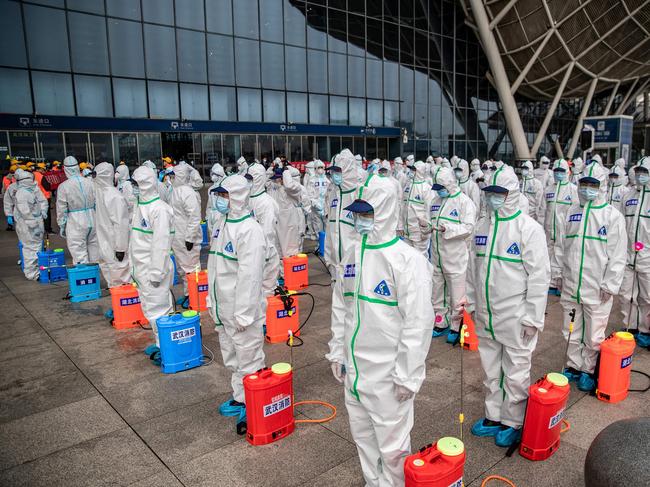

Study author Dr Shengjie Lai said the study showed: “how important it is for countries which are facing an imminent outbreak to proactively plan a co-ordinated response which swiftly tackles the spread of the disease on a number of fronts.’’
“We also show that China’s comprehensive response, in a relatively short period, greatly reduced the potential health impact of the outbreak.”
China took strong action from the end of January, locking-down Wuhan and restricting the movements of millions of people across the country.
Wuhan health officials were formally notified of a worrying new strain of pneumonia on December 27, but doctors had been warning for several weeks a potentially contagious strain had been identified.
Medical journal Lancet published a study which showed that by January 2, there were 41 people admitted to hospitals in Wuhan with “laboratory-confirmed 2019-nCov infection.’’
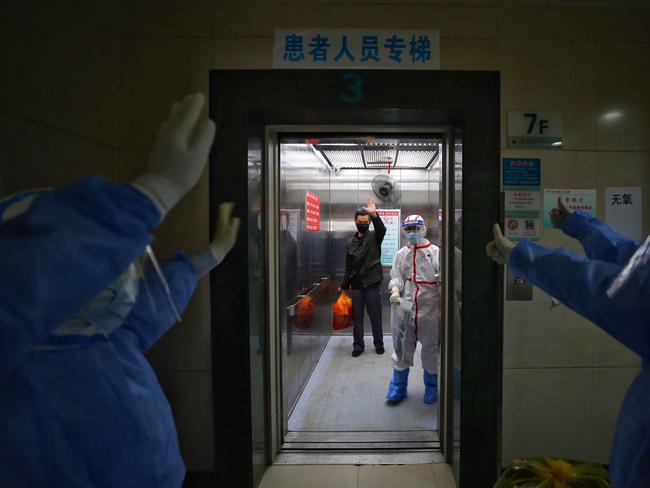
The study, published on January 24, also revealed doctors had identified a case early in December which appeared to be a human contagion case. The study identified the first fatal case of the disease involving a man who had “continuous exposure’’ to the Huanan Seafood Wholesale Market. His symptoms had emerged on December 1.
“ … 5 days after illness onset, his wife, a 53-year-old woman who had no known history of exposure to the market, also presented with pneumonia and was hospitalised in the isolation ward,’’ the study noted.
Health officials responded to the growing crisis by taking action against the doctors who tried to alert colleagues, ordering labs to destroy samples, and closing the university-aligned laboratory in Shanghai which first made public the genomic code for the virus.
The WHO, which has been criticised internationally for its meek acceptance of China’s assertions about the virus, tweeted as late as January 14 that there was no firm evidence it was contagious among humans.
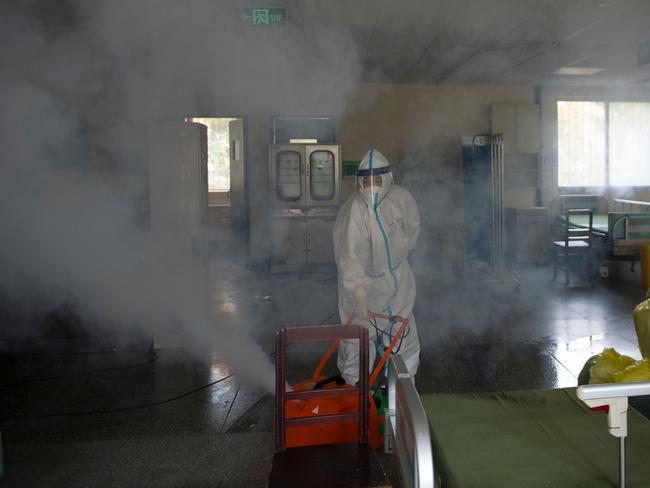
But ophthalmologist Dr Li Wenliang had tried to warn colleagues at Wuhan Central Hospital, sending a post to a private group of seven of his medical colleagues on WeChat at 5.43pm on December 30 that he believed people were catching SARS and advising them to wear protective equipment when dealing with patients.
Dr Li was summonsed and detained by the Wuhan Public Security Bureau, accused of “making false comments’’ and “severely disturbing the social order’’ and made to sign a statement promising not to do it again.
The police then issued a public warning to “all netizens to not fabricate rumours, not spread rumours, not believe rumours.”
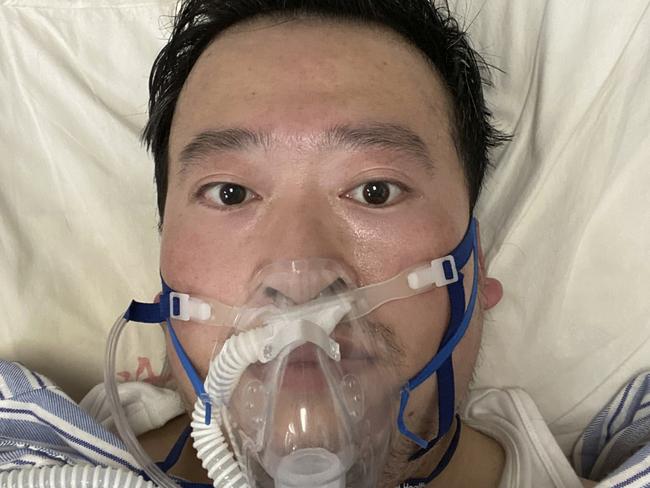
Dr Li went back to treating patients when he was released. He contracted coronavirus and was hospitalised within days. Authorities apologised to him. He died on February 6, his worst predictions realised as 200 of his colleagues at the hospital fell ill.
Another prominent whistleblower was Ai Fen, a director at the same hospital, who first posted the information Dr Li had shared with his colleagues.
She had posted a photograph on WeChat of a diagnostic chart and warned about an infectious illness. She was reprimanded by her bosses and ordered to delete it.
Dr Ai detailed her story in a state-owned newspaper, People, in March, where she also revealed tests had showed a patient at her hospital had contracted a previously unknown coronavirus on December 16. “How could I refrain from discussions with my medical colleagues knowing that a new and significant virus had emerged? I followed my intuition as a doctor,’’ she said.

The People interview was removed from the internet three days later by censors.
Australian scholar and noted critic of the Chinese Communist Party, Clive Hamilton, told News Corp that the virus had “got away’’ because Chinese officials had “actively suppressed information about the virus and downplayed its highly-contagious nature.’’
“Given the attempts by the CCP to rewrite history it’s important to keep reminding Australians of what happened and why the pandemic itself can be attributed in large part to the Chinese Communist Party and the way it covered up early information and refused to act – and in fact put out disinformation for several weeks,’’ Hamilton, a professor of public ethics at Charles Sturt University in Canberra, said.
“For example, before it shut down Wuhan some five million (people) had left over previous weeks, many of them to go abroad and undoubtedly a significant proportion of them who left Wuhan were carrying the virus with them.
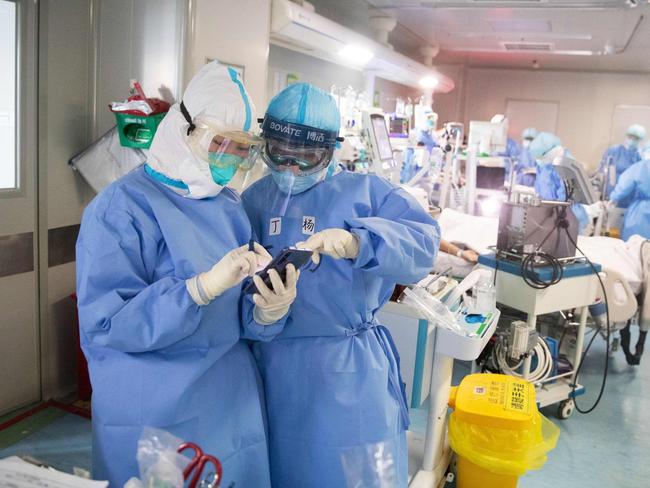
“If Australia ends up in Italy’s situation, which is quite possible, then we will undoubtedly have Beijing magnanimously offering large quantities of medical supplies to Australia to help us solve our terrible medical crisis.
“And of course it’s done entirely cynically, as a way of winning over public sympathy for the Chinese regime.
“It is really a kind of ideological Trojan horse to send across thousands of respirators and masks, ostensibly to provide help in a crisis but really to gain a political and ideological foothold in Australia.’’
Prof. Hamilton likened the actions of Chinese officials who suppressed information about the virus to an arsonist who “set the fire, attends as part of the Rural Fire Service, puts it out, then basks in the glory.’’
“That’s why they’re trying to do. So it’s important to remind people that the CCP set the fire in the first place. If they didn’t strike the match they’re certainly fanned the flames in a sustained and deliberate way because always for the Chinese Communist Party the first and dominant consideration is survival of the regime.’’
MORE NEWS
COVID-19’s new immune super race
More than 100,000 Aussies urgently call banks for help
Aussie girl’s life inside the COVID-19 death centre
Crims target Aussies in new SMS coronavirus scam
By January 9, China identified the genome sequence of the illness and made it public, allowing other countries to develop their own tests for it.
It wasn’t until late January that the country took decisive action against the virus.
There can still be no doubt other actions it took sought to stop details becoming public about the virus outbreak.
On the same day China alerted the WHO, an official at the Hubei Provincial Health Commission ordered one laboratory to stop testing and destroy existing samples.
Three days later, the National Health Commission ordered institutions not to publish any information related to the unknown disease and to transfer or destroy any samples.
On January 11, the Wuhan Municipal Health Commission was still insisting that “no clear evidence of human-to-human transmission has been found.” This was a month after the case involving the wife of the man who died.
Veteran Labor MP and known China hawk Anthony Byrne said: “Once our citizens are safe and our country starts its long and painful recovery, those who are responsible for this pandemic will be held to account.
“There will be a day of reckoning for that government,’’ he told News Corp, referring to the CCP.
“For me it can’t come soon enough.”
